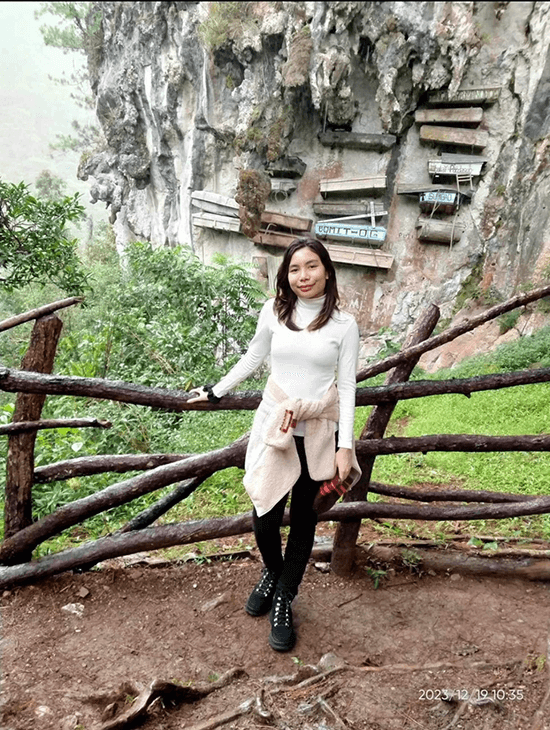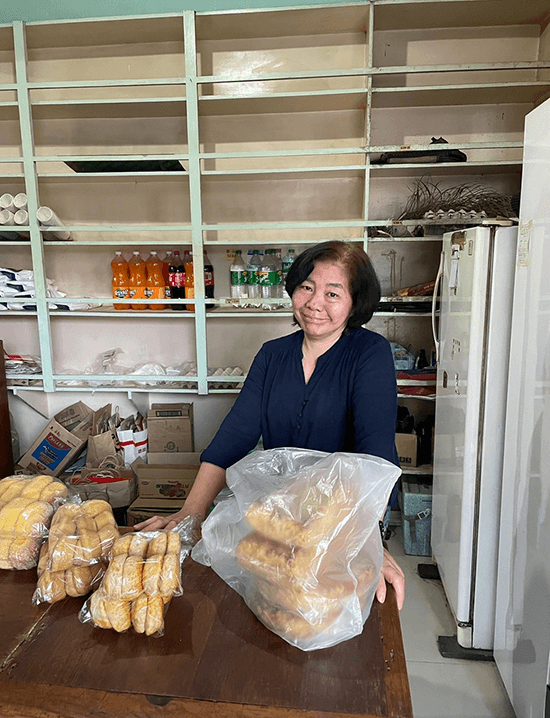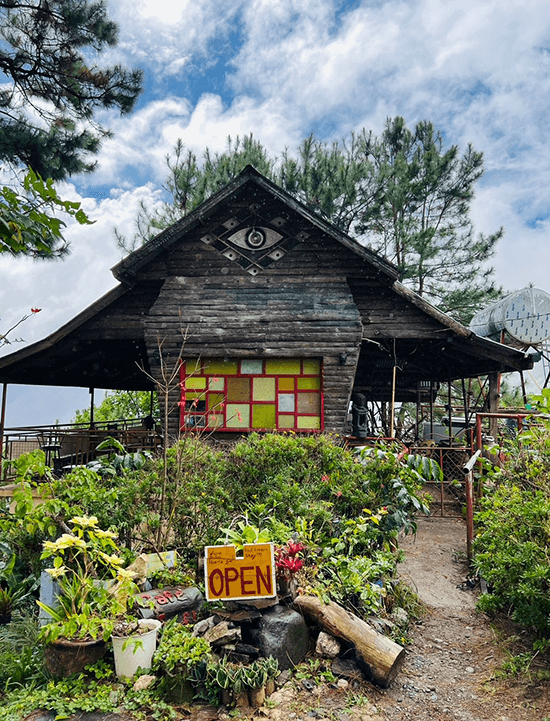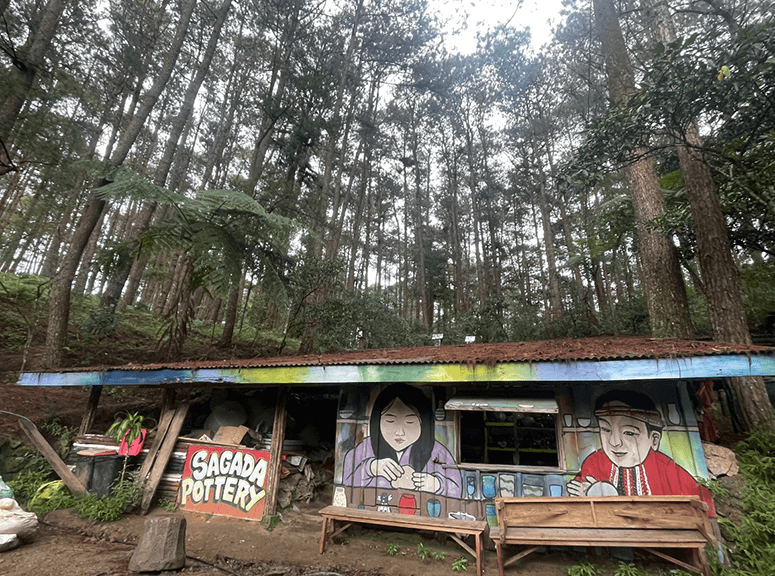Sagada on my mind
It’s a good thing one never gets tired of pine trees, even after seeing them for several hours on serpentine roads heading north to Sagada in Mountain Province.
Dwarfed by magnificent views of sky, clouds and mountains covered in pine, one feels grateful for God’s graciousness—allowing you to marvel at all this even if you are just a speck of humanity driving along the vastness of His universe.
To make His point even more poignant, there were full arcs of rainbows that remained long after the slight drizzle that created them. I am happy and humbled that He has gifted me with this escapade, my first ever visit to Sagada.

Every journey should begin with such a perspective, a spiritual attitude, a joyful expectation, the flavor of adventure.
This journey has all the promise of a soothing balm even for me, the incurable optimist, stressed as I am with the sale of my grandparents’ home and other deadlines.
But stress, sale and sadness begin to slip away as the roads heading north are lined with increasing quantities of those cheerful yellow daisies that thrive all over the Cordilleras. Right now, all I feel is at peace—and looking forward to wherever my Lord’s guiding light takes me.
Decades ago, when I was in college, Sagada was thought of as a difficult destination because of the dangerous roads leading to it. The hairpin curves get even sharper and closer together the nearer you get to the place.
Back then it seemed only backpackers and the foolhardy embarked on such a road, which was unpaved and plied by upland drivers who drove like crazy. People imagined buses falling into the ravines and so did I. Maybe that’s why it took me this long.

Seven hours after leaving Baguio, punctuated by an hour-and-a-half stop at the Northern Blossom flower farm, we have arrived at the outskirts of Sagada. There is no town yet to speak of for another half hour or so.
Our accommodation, Misty Lodge, is part of these outskirts and for that we are really thankful. It means that we are not walking distance to anything but the hanging coffins.
But we are completely surrounded by pine trees, citrus trees and boughs heavily laden with the orange blossoms known as Chinese hats. All the upland flowers, including incredibly variegated bougainvillea, are gigantic, more vivid versions of their lowland selves.
Our spacious room has a balcony in front and a private balcony behind so we can enjoy the quietness, the trees and the birds that stop by. A one-way mirror there enables us to be awed by our winged friends who aren’t aware of us.

Our drive into Sagada proper in search of the Log Cabin for lunch brings my first views of the town. The streets wind around corners, up and down hills. It looks like a sleepy Baguio from 50 years ago, says my daughter, but I was 13 years old 50 years ago and Baguio did not look this sleepy back then. Sagada is greener, thickly forested, a vision of what Baguio must have been like soon after the Americans arrived.
Simple storefronts turn out to house rustic, appealing restaurants and bakeries. The scent of cinnamon drew us into Inso bakery, which has no visible signage. An eight-inch round of the most delicious, unfrosted cinnamon rolls costs P28. We thought we heard P98 and our jaded wallets already found that cheap.

After trying them we returned and eagerly bought more—pillowy kabayans, hot biscuits and lots of rounds of cinnamon rolls.
Those cinnamon rolls took me back to my childhood of baking with American cookbooks in the next-door kitchen of my lola Marina Antonio, where the scent of cinnamon and lemons reigned. Likewise, my first bite of Sagada Lemon Pie House’s lemon meringue pie transported me back to those early years.
My family will say that my lemon meringue pie is better, patterned after the French tarte au citron with a good dose of torched Italian meringue. But that’s not the point.

Sagada Lemon Pie House has captured that quintessential American taste with its cornstarch-thickened lemon layer and that thin, flaky crust. It’s uncomplicated, homey comfort food. And that’s how lemon pie (and cinnamon rolls) should taste in a town founded by American Anglican missionaries.
That foundation is very likely why Sagada exudes a peacefulness and a calm demeanor along its winding roads, humble yet delicious restaurants, gorgeous and subtle limestone outcroppings.

As you drive around your eyes get accustomed to these marvelous rock formations that dot the landscape of Echo Valley and lean over your car; there is even a gas station/cafe that makes use of the formations as structural beams. It makes you wonder how the building permit was obtained.
The Sagada orange trees are everywhere, identifiable by their mottled orange and green fruit. More about them in a bit. We don’t spot kumquats but enjoy them in a homemade ginger-citrus tea concoction, which looks like marmalade. But, oh, that kumquat has the most unique taste and you can enjoy halves of it in this blend, sold by the bottle at Log Cabin.
That’s where we had our first meal, Log Cabin. As in the other eating establishments there is no more than one or two visible staff yet the service is efficient and the food, inevitably delicious…and very easy on your purse. The roast chicken had skin so crackly I suspect a wood-fired oven.
We make early, unfair comparisons with nearby Banaue in Ifugao. The latter’s town is maybe not as picturesque, but then what does that matter when it is dwarfed by magnificent rice terraces? Sagada has rice terraces too but not that jaw-dropping, Thanos-attracting kind. Its appeal is of an entirely different kind.
All of the northern provinces have their unique finds even while bound together by that spine of the Cordillera mountain range, that chilly weather, those pine forests.

Sagada offers many trekking adventures in addition to deliciously healthy eats, all in this charmingly polite, quietly friendly setting. It is highly conducive to inner journeys within one’s soul. It is perfect for losing the stress and the sorrows in the melodic patter of a drizzle as I sit here on the balcony writing this, soothed by pine trees and inspired by cinnamon rolls.
Here life is unhurried, yet it is not slow. The locals are punctual and always smiling. For our first dinner we try Yogurt House, its ground-floor and second-level dining rooms lined with black and white Sagada photos. Filled with a mix of foreigners, locals and tourists, I am reminded of Siargao, albeit an upland one. I order the java chicken not because I’m into java chicken but because a young boy, who looks like the grandson of the old lady behind the counter, recommends it.
Recommendations are what made this visit foolproof from the start. Candy Alipio, who runs Knitting Expedition, recommended Misty Lodge, and we are now ticking off all her favorite restaurants one by one. She lives in Baguio and Sagada is where she goes to relax.
Going back to recommendations and Yogurt House, my daughter Hannah discerned quicker than me the yogurt marinade that made the crispy-on-the-outside pork chops so meltingly tender. A non-vegan will love the curried vegetables and since they make their own yogurt, the mango lassi is yummy while the dish of yogurt with Sagada honey is divine.

The next day I visit the small building housing the public market to buy that uncultured honey, along with upland rice and coffee.
This second day is quietly spectacular, beginning with Sagada orange picking. The Rock Inn and Cafe manages the orchard where the trees, heavy with fruit, provide a most enjoyable half hour. With your guide, an orange-colored eco bag and a pair of shears you don’t know what you want to spend more time doing—picking fruit, eating them on the spot, or taking photos of all the above.
After that we trekked down Echo Valley to see the amazing hanging coffins. You have seen them many times in photos and it’s not the same as when they suddenly appear before you, after that short but steep descent, in that pine-forest setting. Take your time on the way down and even more so on the way back up. It is so worth it.


Then there is Sagada Weaving, not one of the souvenir shops around the town proper but a standalone structure housing the shop. It also has its weavers working the looms in a separate structure in the back.
Listening to Ezra Bondad, third generation in a family of weavers, recall his childhood memories of buying cotton in Ilocos with his grandmother, you realize there is another full story here. There is a tale of how cotton growing lost out to tobacco, how Sagada has a superior silk industry that has stalled from the lack of technical support.

But not all is lost, for I think I was meant to hear Ezra’s story. I immediately message my classmate, Senator Loren Legarda, and she answers that she is happy to help. This is just the sort of thing she loves to get involved with.
I love the story of Ezra Bondad because he opened our minds to a history of Ilocano cotton crops and Sagada silk production, the difficulties of keeping a tradition of quality workmanship alive with tourists who prefer to post pictures of the weavers rather than buy the excellent, well-made products.
I know my elder daughter, fashion-designing scholar Hannah, was meant to hear Ezra’s story in person because it is she and her generation of creatives that will give local weaving and silk production the platforms and the usage they need to thrive.

I love Sagada Pottery and that sense of both industry and artistry that spins around you like a potter’s wheel the moment you step inside. The ladies here—Sigried, Tessie and Ardeth—demonstrate how pottery requires precision, passion, patterns; I am beginning to understand the depth of skill and discipline that lies underneath Sagada’s easygoing vibe, that confident standard of excellence that guides this town’s creatives.
It’s fine to enter the workshops of Sagada Weaving and Sagada Pottery, take photos and post on social media, that still spreads the news.
But taking the workshops, talking to the potters and weavers, buying the beautiful products and using these functional items is to immerse yourself in Sagada tradition, to become a very part of that ancient, pulsing, exciting world and ensure that it survives.
By engaging guides when you visit any of the sights you learn more than you would through Google, you provide employment and you gain friendships with Filipinos that live hundreds of kilometers away.
Sagada is now one of my happy places, alongside Baguio, Hong Kong, San Francisco and Paris. These are places where I have not been a mere tourist but have actually lived for even just weeks. That means they have become for home for me, places where I feel safe, accepted, cocooned and creative.
Sagada has the power, as all these other places do, to make me feel that I have come home. But it did that in record time, because it possesses in addition to its warmth and beauty, a sea of clouds stretching across that vast horizon of possibilities.


